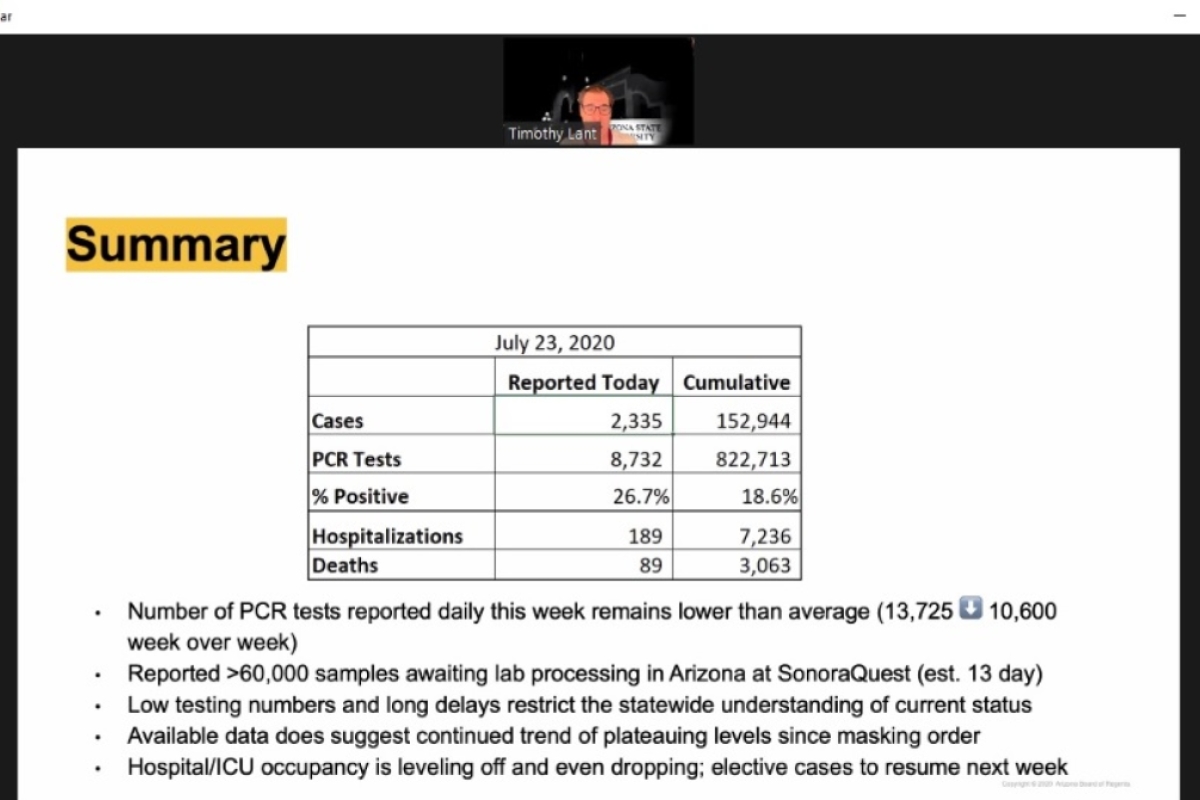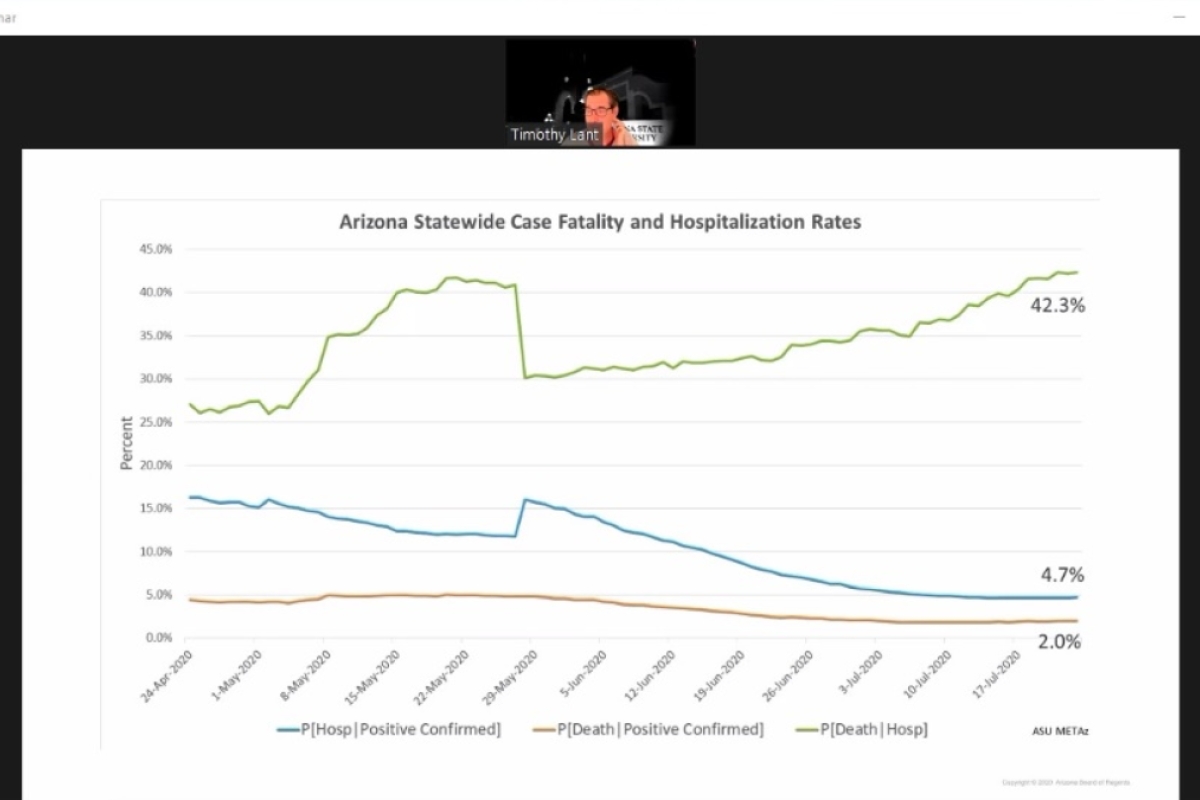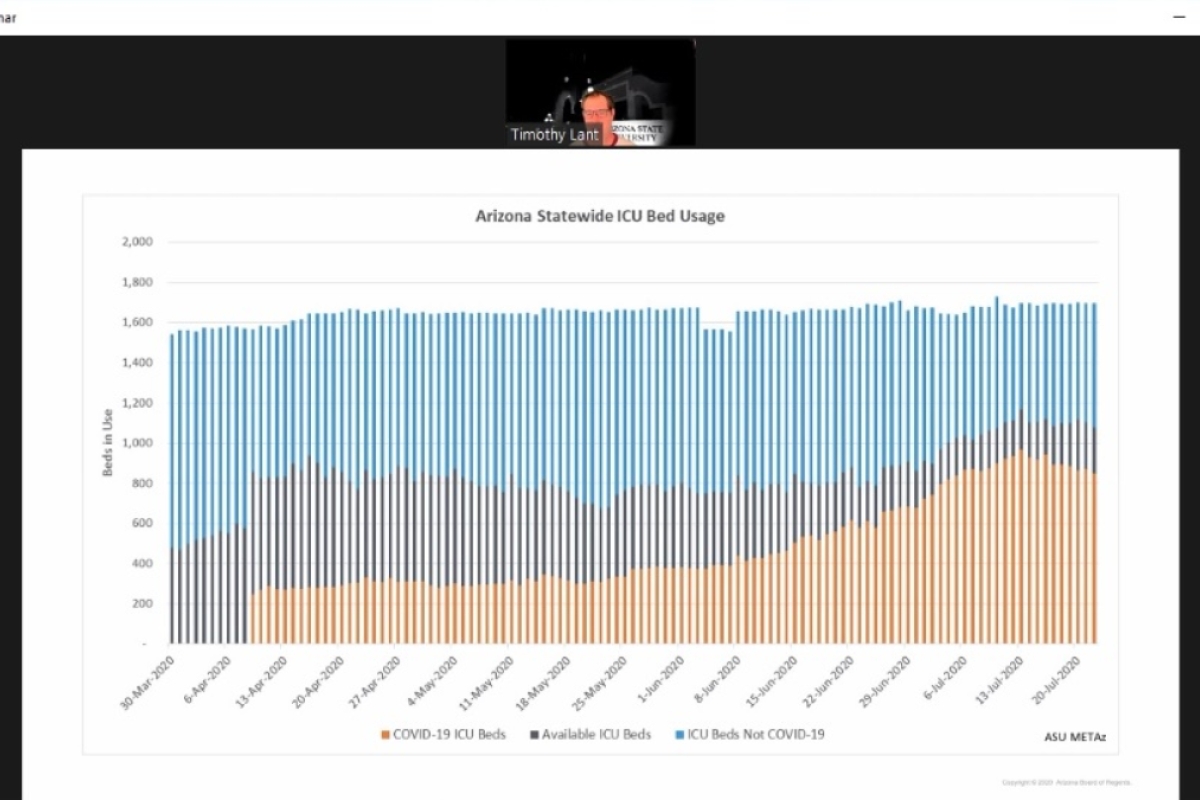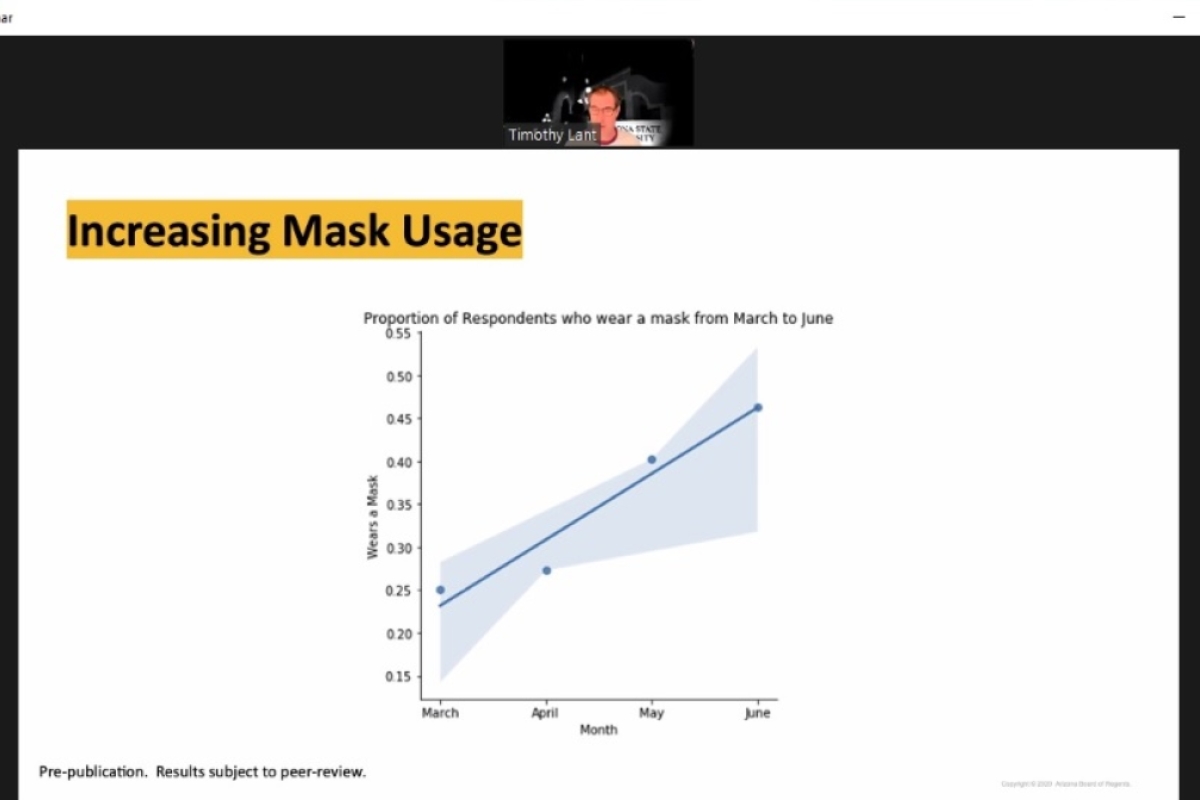Turning data into decisions in a pandemic
College of Health Solutions hosts public health talk on how researchers are translating data to help inform public health decisions

Mere hours ahead of Arizona Gov. Doug Ducey’s press conference on Thursday, July 23, in which he discussed the hotly contested issue of whether to delay the reopening of schools this fall, Arizona State University’s College of Health Solutions hosted their latest public health talk, “Data to decisions: Using information to take action during COVID-19.”
It couldn’t have been more timely, given Ducey’s announcement that the decision of whether or not to reopen schools would be left up to individual school districts, but suggested they make their decision based on a set of benchmarks informed by the most current data we have on the virus, to be decided upon by public health officials by Aug. 7.
While not everyone was satisfied with that decree, it does underscore the importance of data in making decisions that affect public health.
Evidence-based research and data have “always been a cornerstone of public health,” said Will Humble, executive director for the Arizona Public Health Association. Humble has 30 years’ experience in public health, including more than two decades at the Arizona Department of Health Services. He participated in Thursday’s public health talk via Zoom, along with Timothy Lant, director of program development at ASU’s Biodesign Institute who is leading the COVID-19 modeling task force at the university, and Scott Leischow, College of Health Solutions professor and director of clinical and translational science who moderated the talk.
“Whatever your role is in public health, it’s super important to have academic partners, because they’re the folks that have the ability to dive into the data and do the analyses you need to better inform your decisions,” Humble added. “It’s such a critical component. … There’s no substitute for that kind of expert analysis.”
In addition to providing predictive modeling for policy and decisionmakers, researchers at ASU developed the state’s first saliva-based diagnostic test and soon after partnered with the Arizona Department of Health Services to launch testing sites to provide the saliva diagnostic testing free of charge for underserved communities around the state.
Lant began his presentation by delving straight into the data, referencing a slide showing the number of cases reported that day (2,335). While April and May saw a long, somewhat confusing period of plateaued growth in which the disease wasn’t able to get a foothold, Lant said, shortly after businesses began reopening and social distancing measures were pulled back in mid-May, the data began to show an exponential increase in cases that lasted through July.
The increase in cases wasn’t immediate, though, and Humble — who appointed himself the “color commentary” to Lant’s “play-by-play” — explained that’s because there is always a delay in the numbers that data shows.
“You can look at the data between May 15 and June 1 and it still looked OK, because there was a delay; it’s not real time,” Humble said. “So what we saw really was metrics that looked OK up until, I would say, May 26. (After that), it looked like a check mark. The data goes right back. By early June, it was really quite clear for anyone paying attention to the data posted on the Biodesign website … that we were headed for exponential growth, just as the model predicted."
Other, more positive, things the data showed was an increase in mask wearing, Lant said. Not only that, the number of reported cases reflected the significant impact of mask wearing, decreasing after it was mandated in businesses.
That’s the power of using data to make decisions, Humble said.
“That’s the real value of predictive modeling … the opportunity to translate that information into active knowledge so people who make the decision about policy can see what the most talented people in the state think it would look like in two months if you made those decisions.”
In response to a question from the audience about their thoughts on when schools should reopen, both Lant and Humble agreed it should be a condition-based decision, rather than attempting to set a date. Specifically, Humble pointed to two metrics he’d like to see on the decline: hospitalization rates and the seven-day moving average of positive cases. For the latter metric, Arizona is currently at about 23%, which he would like to see at about 5% before schools reopen.
There are reasons why it’s important for children to be back in school, though, Lant argued. “And if schools can create a safe environment, we should do that.”
However, he added, “If we reopen schools and there are cases that emerge with students or teachers who then go home, and maybe they’re living in multigenerational families or maybe they have parents who don’t believe all the social distancing measures are required. … (In that case), we could have an outright mess … with superspreading events. So I think we need to very carefully think through not just how to reopen but how to stay safe when we do.”
Lant is personally deeply engaged in ASU’s efforts to reopen this fall, reporting that the university’s plan is comprehensive, including not just predictive modeling but also measures for testing and contact tracing.
“We’re really thinking about the whole student experience, and faculty and staff, too,” Lant said. “Mill Avenue is not going to be the same this year as it was last year. Going to a football game is not going to be the same this year as it was last year. That’s the reality and we’re going to have to confront that."
More Health and medicine
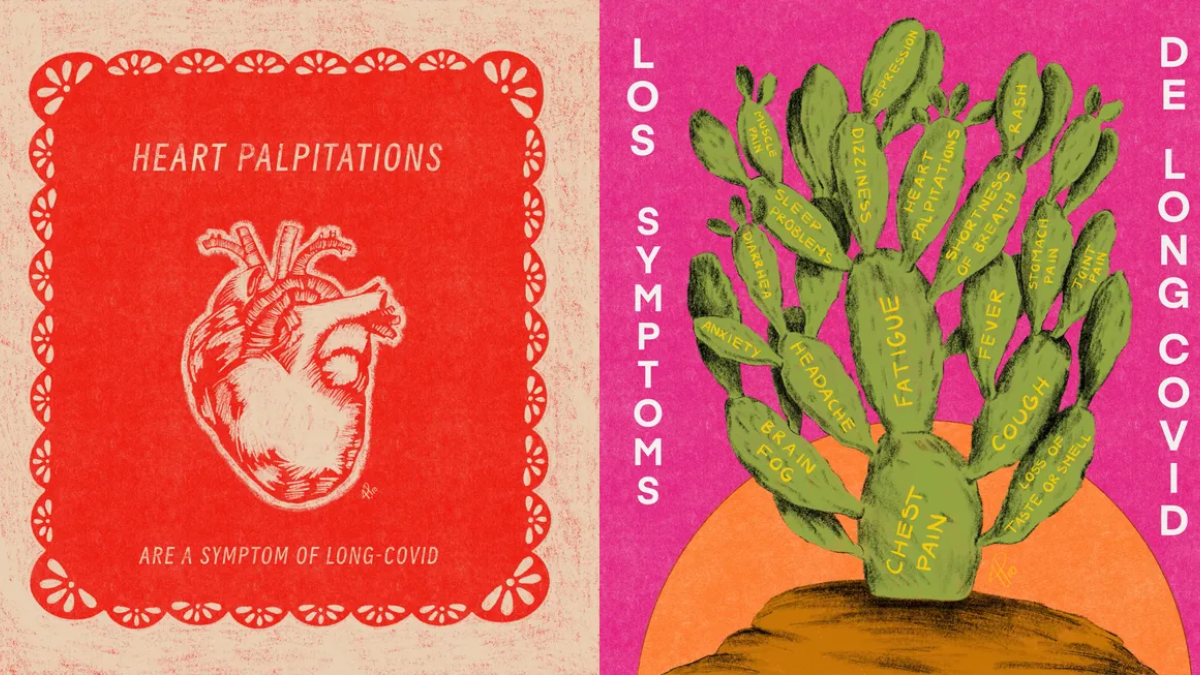
Health communication program brings long COVID awareness to Latinos
After COVID-19 hit the Latino community especially hard, Gilberto Lopez created COVIDLatino, a health communication program designed to share accurate, timely, evidence-based and culturally tailored…
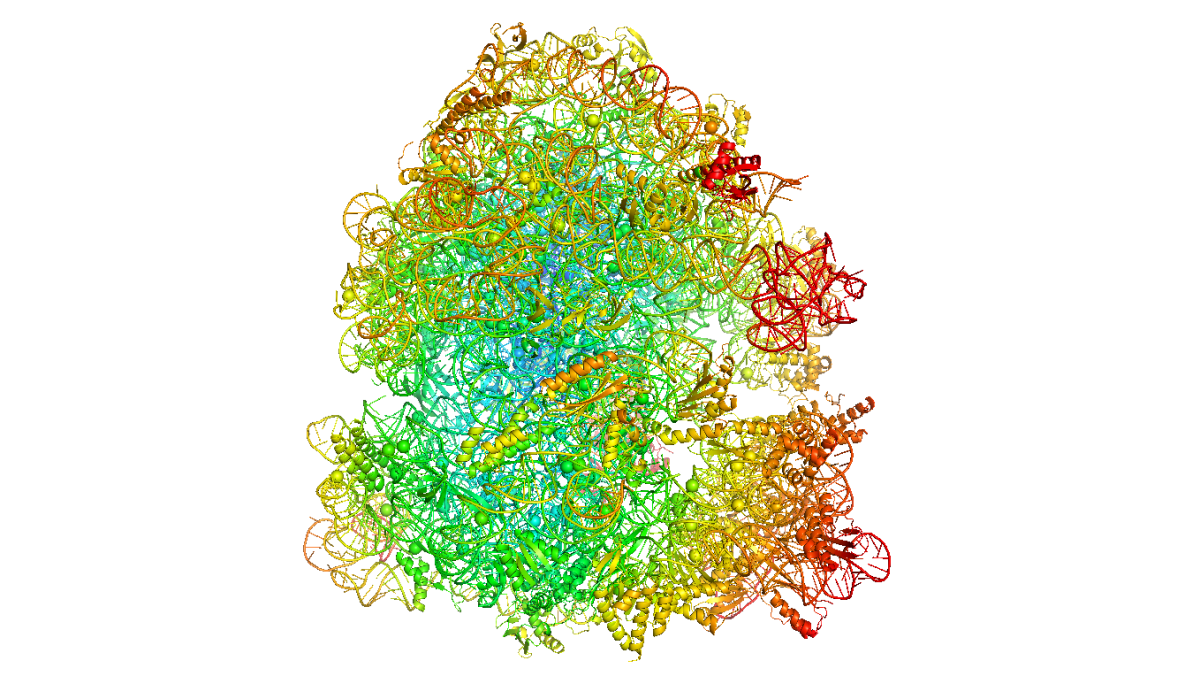
Gates Foundation to fund research on antibiotic resistance
Antibiotic resistance, what happens when germs develop the ability to defeat the drugs designed to kill them, is a growing concern among scientists today. When bacteria become resistant to…
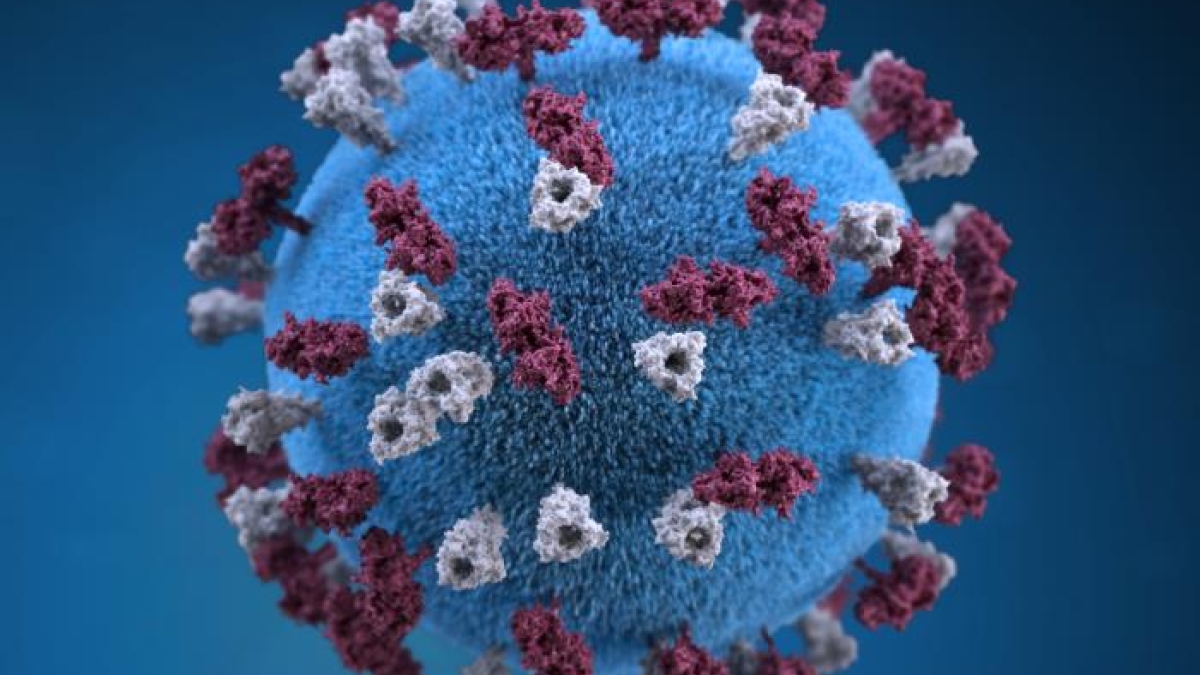
ASU epidemiologist on the rise in US measles cases
The Centers for Disease Control and Prevention issued an alert this month about a rise in measles cases worldwide. And as of March 21, a total of 64 measles cases were reported in 17 states,…
